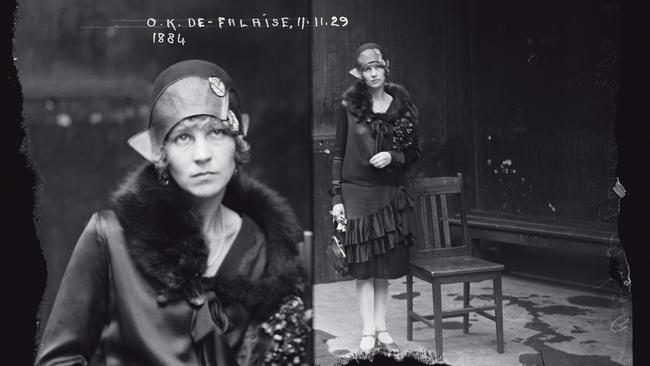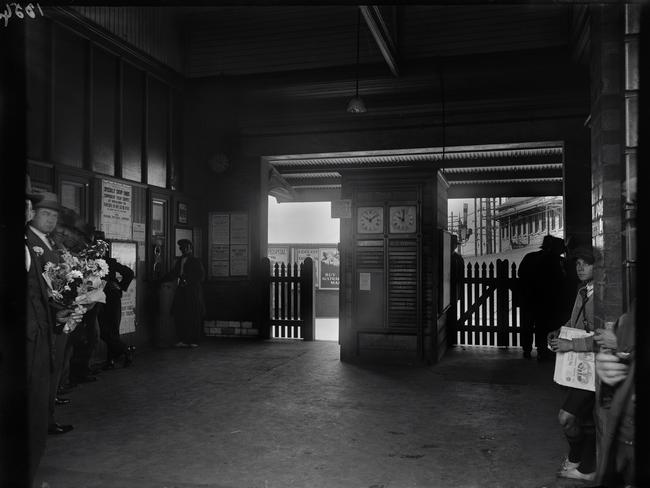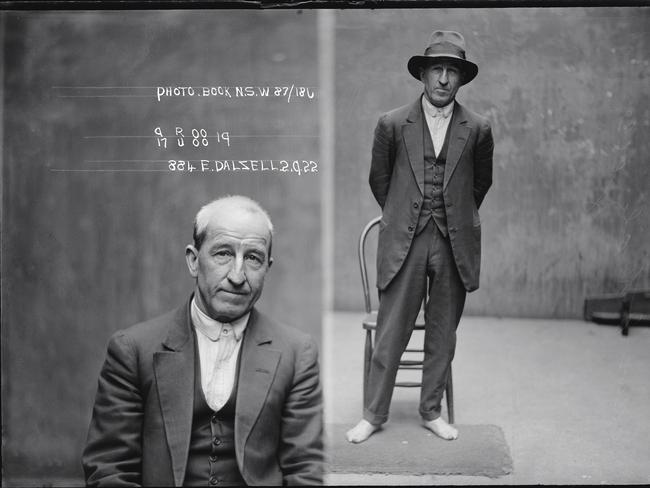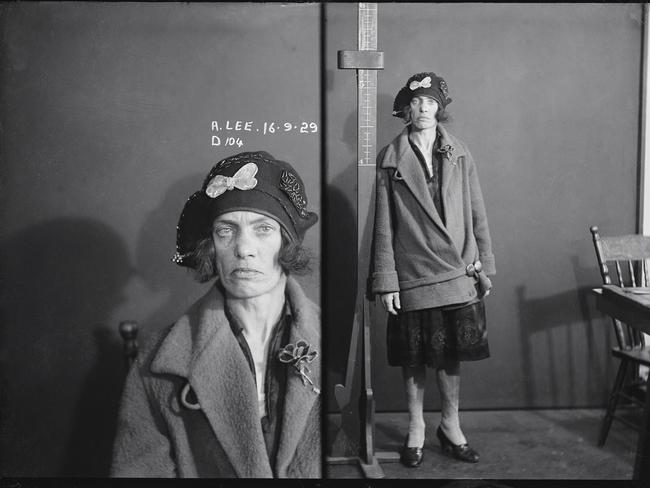Cocaine, con artists and gang crime: Welcome to the underworld of the 1920s
WELCOME to the dark side of the roaring twenties, a golden age of jazz, booze, fast cars and for an entrepreneurial crook, Sydney was a villain’s paradise.

NSW
Don't miss out on the headlines from NSW. Followed categories will be added to My News.
BEAUTIFUL, stylish with a talent for spinning tales, if you wanted to set a honeytrap in the 1920s, Olga Anderson was your girl.
Posing as a marchioness, Anderson lured a string of married men into affairs before extorting them with threat of exposure together with her accomplice Frank Arnold.
The pair travelled the world on the proceeds of their blackmail racket until one of her victims blew the whistle in Sydney.
On November 11, 1929, wearing her very best ‘who me’ face, Anderson found herself staring down the lens of a police photographer’s camera, posing for NSW’s notorious mugshot collection, ‘The Specials’.

Her striking portrait forms part of Underworld, a stunning new exhibition of mugshots taken between 1920 and 1930 that provides a glimpse into the seedy side of roaring twenties Sydney.
From hardened gangsters to goodtime girls, wayward youths, fallen soldiers and petty crims, the 130 candid images taken of suspects before their day in court were never intended to be seen by the public.
Reproduced from the original glass negatives, the suspects are captured in extraordinary detail as they smile, sneer, slouch over chairs and stare defiantly into the camera.
“It’s a rare and enchanting collection in that there’s so much candour in the faces of people being photographed,” said curator Nerida Campbell.
“They’re unlike any mugshots that we’ve found anywhere else in the world.”


For an entrepreneurial crook in the 1920s, Sydney was a villain’s paradise. A decade of massive social change and fast times had opened up lucrative rackets in cocaine, sly grog, SP bookmaking, even stolen car parts thanks to an influx of cars. The mafia had arrived and organised crime flourished.
Underworld tells the stories of the big shots and low lives who emerged to form Sydney’s new crime hierarchy in the aftermath of war.
“The photographs capture the dark side of the roaring twenties, the people who made mistakes, the people who hadn’t thought about the consequences, the people who just didn’t care and went ahead and committed their crimes.”

While the exhibition documents the rise of crime bosses such as sly grogger Kate Leigh, the petty crims are equally intriguing. Like safe breaker Edward Dalzell, who was dragged barefoot from his lover’s bed for his mugshot and kindly provided with a doormat to stand on by the police.
Or the dapper confidence trickster Henry Marchant, caught running elaborate swindles outside the city’s hotels.
“You can see in his face there’s something likeable, you can see how people might want to trust him,” said Ms Campbell. “It speaks about a different time, when people were perhaps a bit more trusting.”

There’s also heartbreaking characters like Amy Lee, whose downward spiral into cocaine addiction inspired sympathy among the police.
“The police had known her for 15 years and watched her go from a bright, vivacious, pretty girl to a sad addict who’d lost the potential of her life,” said Ms Campbell
“When you look at her Specials photograph, you can see the septum of her nose has actually collapsed because the adulterated cocaine she’d taken for so many years.”
Underworld: Mugshots from the Roaring Twenties can be seen at the Museum of Sydney until August 12, 2018.

ABOUT THE SPECIALS
Sydney’s Justice and Police Museum holds a collection of 130,000 negatives taken by NSW Police as part of their investigations between 1910-1964 and within that, there’s about 2500 images known as ‘Special’ photographs from 1910 and 1930.
“We’ve done a bit of research into what police departments were doing around the world and we’ve just come across nothing like these images,” said curator Nerida Campbell.
“Whether it’s something about the way Sydney police did their job, certainly they’re not as regimented as those seen in France, America. There’s a bit more of an ease and a relaxed vibe to them, and maybe that’s indicative of the Australian lifestyle.”

Sydney Living Museum’s research suggests NSW police photographer George B. Howard was instrumental in creating the unique style of the Specials. A keen amateur photographer, it was after his posting to Sydney the remarkable rogues’ gallery of mugshots began to appear.
There’s no documentation as to how the images were to be taken, but there are certain common factors. For example, you’ll very rarely see a height measure, instead a Bentwood chair was placed next to the suspect, an item found in every police station and court in the state.
“With a Bentwood chair next to them, police had a rough idea of how tall that person would be.
“By not putting height measures in the images, police may have used the pictures to show witnesses without them clocking the person was in custody.”
- All images are from the NSW Police Forensic Photography Archive, Sydney Living Museums
- This story was first published in the Daily Telegraph in December 2017
